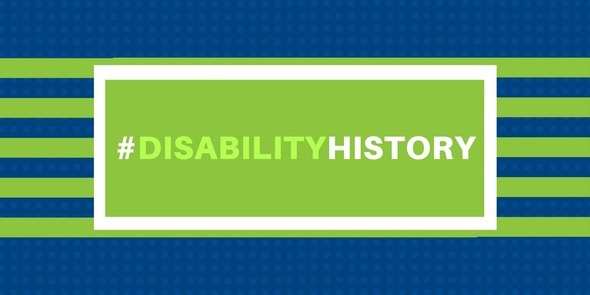History of Disability Rights

1930’s
The defining event of the 1930s the Great Depression, brought a resurgence in the Eugenics Movement. This time eugenicists based their arguments on economics instead of genetics. These arguments, and the notion of Darwin’s ‘survival of the fittest’, proved persuasive as competition for a scarce number of jobs became brutal.
Paradoxically, the decade saw the election of FDR, the first president with a physical impairment. Using a wheelchair for mobility due to polio, Roosevelt’s disability was not widely known by the public. During most of Roosevelt’s public appearances he was not seen in his wheelchair and was often placed at the podium to appear as if he was standing on his own.
Although he downplayed his own disability, Roosevelt brought the concept of social security to America through his New Deal. As part of the Social Security Act, public assistance was extended to ‘the blind’ and children with disabilities. Ironically, his belief in a social safety-net for citizens with disabilities contrasted the fact that the work relief programs his administration devised often discriminated against individuals with disabilities.
1933
- Franklin Delano Roosevelt, the first physically disabled person to be elected as a head of government, is sworn into office as President of the United States.
- The Council for the Retarded Child in Cuyahoga County, Ohio was founded by concerned parents to assist children of the area who had been excluded from Cleveland’s public schools. This organization is largely recognized as the prototype and founding organization upon which the Association of the Retarded Citizens was built.
1935
- New York City’s League for the Physically Handicapped was formed to protest discrimination by New Deal programs. The Home Relief Bureau of New York City stamped all applications with “PH” which stood for physically handicapped.
Members of the League held a sit-in at the Home Relief Bureau for nine days and a weekend sit-in at the WPA headquarters. These actions eventually led to the creation of 1500 jobs for people with physical disabilities in New York City.
1936
- The Randolph Sheppard Act establishes a program for employing blind vendors at stands in the lobbies of federal buildings.
1938
- Passage of the Fair Labor Standards Act leads to an enormous increase in the number of sheltered workshop programs for blind workers. Although intended to provide training and job opportunities for blind and visually impaired workers, it often leads to exploitation of workers through sub-minimum wages in poor working conditions.
1939
- The Cleveland Rehabilitation Center evolves from the Sunbeam Association to provide services to people with disabilities.


